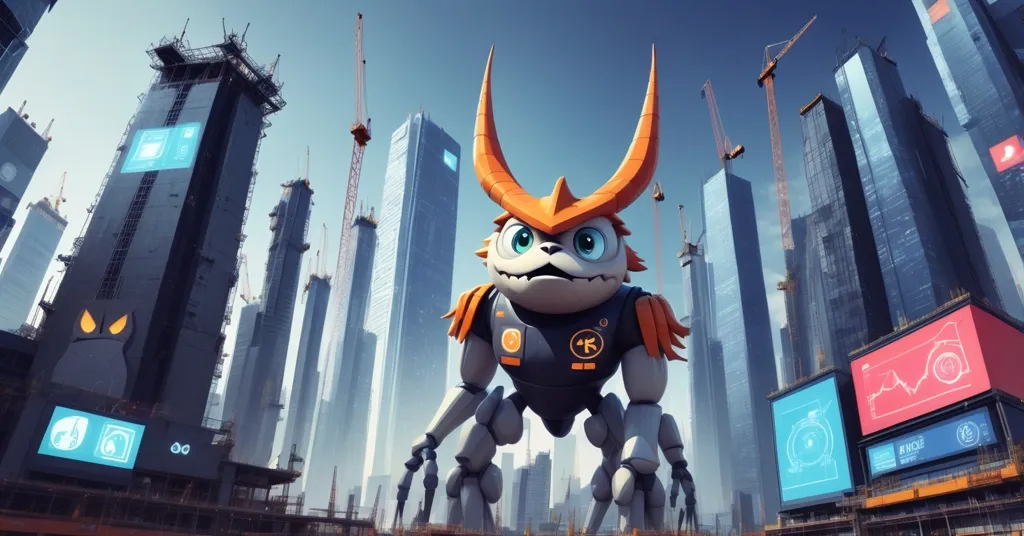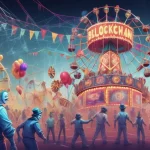Expo 2025 Osaka Struggles: Low Sales, Mascot Backlash, Web3 Push Amid Delays

Expo 2025 in Osaka: Ambitious Vision Meets Harsh Reality
Despite its goal to showcase the future of digital and cashless transactions, Expo 2025 in Osaka is grappling with significant challenges, including low ticket sales, an unpopular mascot, and construction delays.
- Low ticket sales: only 8 million out of 14 million target.
- Unpopular mascot, Myaku-Myaku, seen as monstrous.
- Web3 technology integration with digital wallet app.
- Construction delays with only 20% of pavilions completed.
Expo 2025 in Osaka, Japan, aims to be a pioneering event in the world of digital and cashless transactions, with a heavy emphasis on “Web3” technologies. However, the event faces significant hurdles as it struggles to meet its ambitious goals. As of March 5, ticket sales have only reached 8 million, falling short of the targeted 14 million. The complex ticketing system has been dubbed by potential attendees as “confusing and hard to navigate,” which has contributed to the lower-than-expected sales. More details on the challenges can be found here.
Adding to the event’s woes is the mascot, Myaku-Myaku, designed to represent the fusion of cells and water, symbolizing life and fluidity. Instead, the public has reacted with disdain, describing it as “disgusting” and “monstrous.” One visitor remarked, “No matter how you dress it up, I just can’t stand it.” Another said, “I’m sorry, but it just looks like a monster to me.” These reactions have undoubtedly impacted the event’s appeal and likely contributed to the low ticket sales. Public sentiment towards Myaku-Myaku can be explored here.
In an effort to embrace the future of technology, Expo 2025 is pushing the boundaries with its digital wallet app. The app integrates “Web3” features such as Soulbound Tokens (SBTs) and Non-Fungible Tokens (NFTs) commemorating the 1970 Osaka World Expo. SBTs are tokens that cannot be transferred and are tied to the owner’s identity, while NFTs are unique digital assets that can represent ownership of a specific item or piece of content. The “Connect Feature” links to Web3 wallets, allowing attendees to join Expo-related services and events even before the event officially begins. The digital wallet also promotes the United Nations’ Sustainable Development Goals (SDGs), encouraging participants to engage in initiatives like the use of insect-food vending machines, aiming to foster a more sustainable future. Learn more about the integration of Web3 at Expo 2025 here.
However, the digital allure hasn’t been enough to overcome practical challenges. Construction delays have left only 20% of the main “Type A self-built pavilions” completed, raising doubts about the event’s readiness. Foreign participants are also struggling to meet interior display deadlines, adding to the logistical challenges. These delays could potentially impact the visitor experience and the event’s overall success. The impact of these delays is discussed here.
Despite these setbacks, the leadership of Expo 2025 remains hopeful. Hiroyuki Ishige, the leader of the Japan Association for the 2025 World Exposition, acknowledges the ambitious ticket sales goal but remains committed to the event’s vision. He stated, “Even before the Expo officially begins, you can join the Expo-related services and events through the ‘Connect Feature’, which is linked to Web3 Wallets and the SBT Digital Passport.” The Japanese government is reportedly considering scrapping the advance ticket purchase policy to boost attendance, indicating a potential shift in strategy. More on the event’s challenges can be found on Wikipedia.
The Expo’s attempt to blend cutting-edge technology with global sustainability goals is commendable. Yet, the execution leaves much to be desired. As the event looms closer, it remains to be seen whether Osaka can turn the tide and make Expo 2025 the futuristic spectacle it aspires to be. Discussions on ticket sales issues can be found on Reddit.
While the challenges are significant, the potential impact of Expo 2025 on the adoption of digital and cashless transactions, as well as the promotion of “Web3” technologies, cannot be understated. If successful, it could set a precedent for future events and contribute to the ongoing shift towards a more decentralized and sustainable global economy. The role of Web3 technology at Expo 2025 is further discussed on Quora.
Key Takeaways and Questions:
- What is the main issue facing Expo 2025 in Osaka?
The main issues include lower-than-expected ticket presales, a complex ticketing system, construction delays, and an unpopular mascot.
- How is Expo 2025 promoting “Web3” technologies?
The Expo promotes “Web3” through its official wallet app, which offers SBTs and NFTs, and a “Connect Feature” linked to Web3 wallets.
- What is the public reaction to the Expo’s mascot, Myaku-Myaku?
The public reaction has been largely negative, with many describing the mascot as disgusting and monstrous.
- What role do the Sustainable Development Goals play in Expo 2025?
The Expo’s digital wallet promotes the SDGs, encouraging participation in various initiatives, including the use of insect-food vending machines.
- How have construction delays impacted the event?
Construction delays have resulted in only 20% completion of the main “Type A self-built pavilions,” raising concerns about the event’s readiness.
- What payment options are available at Expo 2025?
The Expo will be cashless, with options for payment including the digital wallet and facial recognition for those who register their biometric data.
Even before the Expo officially begins, you can join the Expo-related services and events through the ‘Connect Feature’, which is linked to Web3 Wallets and the SBT Digital Passport.
Earn unique points by participating in various SDGs and the EXPO initiatives, and by exchanging other points!
No matter how you dress it up, I just can’t stand it.
Disgusting.
I’m sorry, but it just looks like a monster to me.



